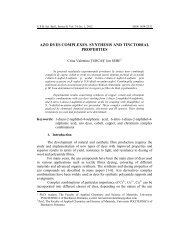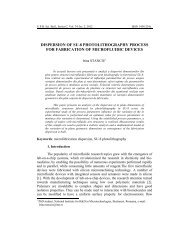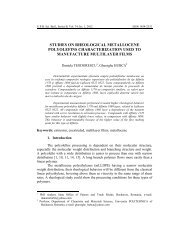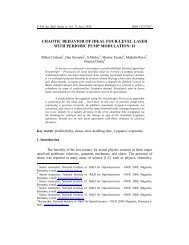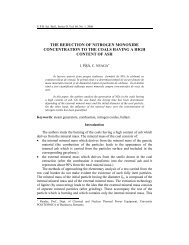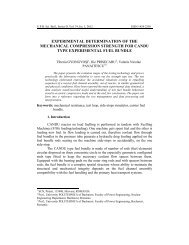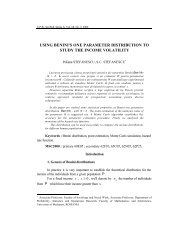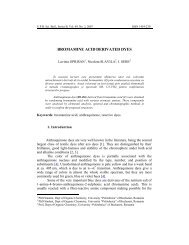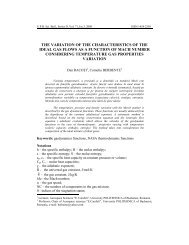a smart grid application â street lighting ... - Scientific Bulletin
a smart grid application â street lighting ... - Scientific Bulletin
a smart grid application â street lighting ... - Scientific Bulletin
You also want an ePaper? Increase the reach of your titles
YUMPU automatically turns print PDFs into web optimized ePapers that Google loves.
320 Dan Simhas, Claudiu Popovici<br />
234<br />
232<br />
230<br />
228<br />
Voltage L1<br />
1357911131517<br />
Voltage<br />
L1<br />
6,2<br />
6,1<br />
6<br />
5,9<br />
5,8<br />
P L1 measured<br />
1 4 7 10 13 16<br />
(a)<br />
(b)<br />
Fig. 3.4. Measured phase voltage (a); Measured phase active power (b)<br />
P L1<br />
measure<br />
d<br />
6,2<br />
6,15<br />
6,1<br />
6,05<br />
6<br />
5,95<br />
P L1 calculated<br />
1 3 5 7 9 11 13 15 17<br />
P L1 calculated<br />
Fig. 3.5. Calculated phase active power<br />
In both measured and calculated values, large active power consumption<br />
variations are noted, with a maximum power variation of approximately:<br />
ΔP 0,2 [kW]. (22)<br />
min −max<br />
=<br />
This value (22) is closed to the rated power of a regular <strong>street</strong> <strong>lighting</strong><br />
lamp (250 W) and higher than the dimmed rated power for the same kind of<br />
luminary (150 W).<br />
The result shows that using a simple comparison between measured active<br />
power values, from the monitored area, in different days, would have resulted in a<br />
false positive result indicating a burned lamp.<br />
Using the proposed algorithm, expected power consumption of each lamp<br />
is computed based on measured values for each reference interval, taking into



